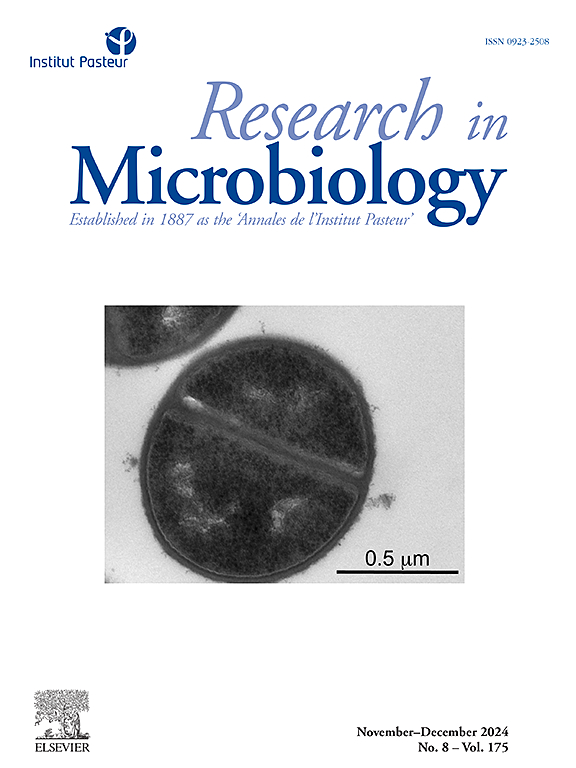Emerging concept of genomic islands in bacterial adaptation and pathogenicity
IF 3.4
4区 生物学
Q3 MICROBIOLOGY
引用次数: 0
Abstract
Genomic Islands (GEIs) are distinct DNA segments acquired through horizontal gene transfer (HGT), driving bacterial evolution and adaptation. These include Pathogenicity Islands (PAIs), Symbiosis Islands, Antibiotic Resistance Islands, Xenobiotic-Degradation Islands, and Nitrogen Fixation Islands. GEIs contribute to genetic diversity, enhancing bacterial pathogenicity, symbiosis, antibiotic resistance, and xenobiotic degradation. Characterized by variations in GC content, codon bias, and integration sites, they distinguish themselves from the core genome. Advances in genome sequencing and bioinformatics have deepened our understanding of GEIs in bacteria like Salmonella, Vibrio, E. coli, and many more, offering insights into microbial evolution, pathogenicity, and antibiotic resistance mechanisms.
基因组岛在细菌适应和致病性中的新概念。
基因组岛(GEIs)是通过水平基因转移(HGT)获得的独特DNA片段,驱动细菌进化和适应。这些岛屿包括致病性岛(PAIs)、共生岛、抗生素耐药性岛、异种生物降解岛和固氮岛。gei有助于遗传多样性,增强细菌致病性、共生、抗生素耐药性和外源降解。以GC含量、密码子偏倚和整合位点的变化为特征,它们将自己与核心基因组区分开来。基因组测序和生物信息学的进步加深了我们对沙门氏菌、弧菌、大肠杆菌等细菌中gei的理解,为微生物进化、致病性和抗生素耐药机制提供了新的见解。
本文章由计算机程序翻译,如有差异,请以英文原文为准。
求助全文
约1分钟内获得全文
求助全文
来源期刊

Research in microbiology
生物-微生物学
CiteScore
4.10
自引率
3.80%
发文量
54
审稿时长
16 days
期刊介绍:
Research in Microbiology is the direct descendant of the original Pasteur periodical entitled Annales de l''Institut Pasteur, created in 1887 by Emile Duclaux under the patronage of Louis Pasteur. The Editorial Committee included Chamberland, Grancher, Nocard, Roux and Straus, and the first issue began with Louis Pasteur''s "Lettre sur la Rage" which clearly defines the spirit of the journal:"You have informed me, my dear Duclaux, that you intend to start a monthly collection of articles entitled "Annales de l''Institut Pasteur". You will be rendering a service that will be appreciated by the ever increasing number of young scientists who are attracted to microbiological studies. In your Annales, our laboratory research will of course occupy a central position, but the work from outside groups that you intend to publish will be a source of competitive stimulation for all of us."That first volume included 53 articles as well as critical reviews and book reviews. From that time on, the Annales appeared regularly every month, without interruption, even during the two world wars. Although the journal has undergone many changes over the past 100 years (in the title, the format, the language) reflecting the evolution in scientific publishing, it has consistently maintained the Pasteur tradition by publishing original reports on all aspects of microbiology.
 求助内容:
求助内容: 应助结果提醒方式:
应助结果提醒方式:


